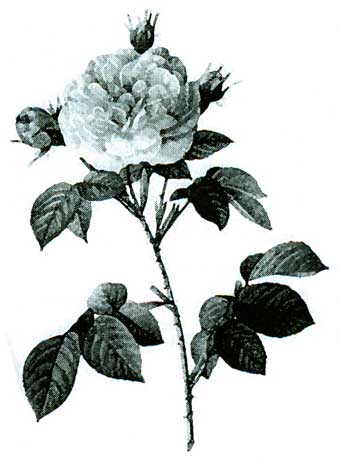
In the winter garden we have been pruning the Old Roses for a solid month, caught in a thicket of crossed canes and swollen buds. We planted this garden almost twenty years ago, and today I am the cowering servant of Rosa mundi and great maiden’s blush. These roses thrash me soundly if my pruning shear mindfulness wavers in their ancient presence.
And it does. This morning there was an eruption of wildlife at the base of the great maiden’s blush, a rose whose original name in her native French is cuisse de nymphe, or “The Inner Thigh of the Nymph,” a name which evokes perfectly both the suffused pink color of the rose as well as the source of her modest, anglicized name.
The ground beneath the great maiden trembled and from the depths of the underworld, a prehistoric Jerusalem cricket unfolded, bald and crumpled, wearing a veneered suit of harlequin brown and black stripes. The cricket paused blindly in a shaft of low winter light and scuttled away over the February garden.
This creature, a recognized harbinger of good fortune in every garden, stopped me cold. I saw that for the duration of this New Year I have been caught in the temple of form, forgetting entirely about what Suzuki-roshi loved to call, “the nothingness of the ground,” or that invisible realm of emptiness that seethes with life just below the surface of the soil.
“We know more about the movement of celestial bodies than about the soil underfoot,” proclaimed Leonardo da Vinci five centuries ago. And yet, in the 200 square feet of our classic rose garden some 20 billion bacteria inhabit and compose the living soil, along with 250 billion fungi, at least 200 million protozoa, close to 3 million nematodes, thousands of mites, easily 2,000 earthworms, and a vital clutch of good-luck underground crickets, to boot.
We are intertwined. Some bacteria sip nitrogen from the living air and fix it on the roots of host plants in plump pink purses of protein, while other bacteria consolidate sulfur from stone and render it available to our classic roses. And all the while, throughout solid ground where well-intentioned gardeners prune and pontificate on the surface, mycelial threads of a vast fungal network spread and radiate out in widening circles, attaching to plant roots for nourishment while fending off disease in the garden.
Winter soil speaks to me this morning, in full earth tones. In honor of Groundhog Day and Jerusalem crickets, declare a full day of rest in your garden, growls the ground. Put down your shears, kick off your muddy boots, and let the great maiden blush in peace. Unprotected, lean into the nothingness of the ground until you hear the old music squeeze up through the pores of your garden soil.
Stay at ground zero all day long. Forget about analyzing your garden with soil test kits, pH monitors, or NPK measurements (Nitrogen, Phosphorus and Potassium levels—Eds.) of any kind. On this day, these tricks are blasphemy and death itself. If you want to know your soil, try licking it with your tongue, like the old ones used to do. Taste its true grit. Alkaline soil is sweet on the tongue, chalky almost, while acid soil fizzes in the mouth with sour life.
Or rub your soil between your fingers and then, in honor of the fresco painters of the Italian Renaissance, whose primary palette of pigment was derived from raw earth, paint with a smear of your ground on a sheet of paper or on a rock moistened with snow, rain, or tears.
Last of all, if you still doubt the web of life beneath your feet, pour a capful of hydrogen peroxide on your naked soil and let the hosts of bacteria and microorganisms reveal themselves in a froth of glory, proclaiming their fanfare of the empty field. And tomorrow, when you pick up your shears and return to work in the rose garden, remember the nothingness of the ground. ▼